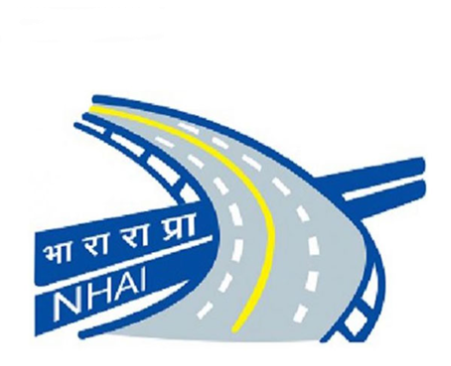National Highway Authority of India (NHAI)
The National Highway Authority of India (NHAI) is an autonomous agency of the Government of India, established on 15 June 1989 under the Ministry of Road Transport and Highways. NHAI is responsible for the development, maintenance, and management of the National Highways network in India.
Establishment and Objectives
NHAI was created through the National Highways Authority of India Act, 1988, with the primary objective of developing, maintaining, and managing the National Highways and any other highways vested in or entrusted to it by the Government of India. The agency aims to promote economic development and foster interstate connectivity by constructing and maintaining high-quality roads and highways.
Functions and Responsibilities
The main functions and responsibilities of NHAI include:
- Development and maintenance of National Highways
- Implementation of road safety measures and environmental protection along National Highways
- Collecting tolls on selected sections of National Highways
- Promoting private sector participation in the development and maintenance of National Highways through Public-Private Partnerships (PPP)
- Conducting feasibility studies and detailed project reports for new highway projects
- Acquiring land for highway projects and compensating affected parties
Organizational Structure
NHAI is governed by a Board, which is chaired by the Minister of Road Transport and Highways. The Board consists of a Chairman, who is the chief executive of the organization, and other members, including representatives from the Ministry of Finance, Ministry of Road Transport and Highways, and other relevant government departments. NHAI has regional offices across the country to oversee the implementation and management of highway projects at the local level.
Projects and Initiatives
- National Highways Development Project (NHDP): The NHDP is a flagship project of the NHAI, launched in 1998, with the aim of upgrading and widening the existing national highways. The project is being implemented in seven phases, covering a total length of over 49,260 km.
- Bharatmala Pariyojana: Launched in 2017, this is an umbrella program for the highways sector, focusing on optimizing the efficiency of freight and passenger movement across the country. It aims to develop around 26,000 km of economic corridors, 8,000 km of inter-corridors and around 7,500 km of feeder routes.
- Electronic Toll Collection (ETC): The NHAI has implemented the ETC system, also known as FASTag, to enable cashless and seamless toll collection at national highways. This has reduced congestion at toll plazas and improved the efficiency of toll collection.
- Wayside Amenities: The NHAI has been developing wayside amenities along national highways to provide basic facilities like rest areas, toilets, restaurants, and fuel stations for the convenience of highway users.
- Green Highways Policy: The NHAI has adopted the Green Highways Policy, which aims to promote greening and plantation along the national highways. The policy also focuses on the use of eco-friendly materials and technologies in highway construction.
National Highway Development Project (NHDP)
One of the most significant initiatives undertaken by NHAI is the National Highway Development Project (NHDP). Launched in 1998, the NHDP is a phased program aimed at upgrading and strengthening the National Highways network in India. The project includes the following components:
- Golden Quadrilateral (GQ): Connecting the four major metropolitan cities of Delhi, Mumbai, Chennai, and Kolkata with four-lane highways.
- North-South and East-West Corridors: Connecting Srinagar to Kanyakumari and Silchar to Porbandar, respectively, with four-lane highways.
- Port Connectivity: Linking major ports in the country to the National Highways network.
- Other projects: Including the development of expressways, ring roads, and bypasses around major cities.
Bharatmala Pariyojana
In 2017, the Government of India launched the Bharatmala Pariyojana, an ambitious highway development program that aims to optimize the efficiency of freight and passenger movement across the country. The program, being implemented by NHAI, involves the development of around 65,000 km of National Highways, including economic corridors, feeder routes, coastal and port connectivity roads, and border roads.
Funding and Revenue Sources
The NHAI is funded through a combination of budgetary allocations, market borrowings, and private sector participation. The main sources of revenue for the NHAI are:
- Fuel Cess: A portion of the cess collected on petrol and diesel is allocated to the NHAI for the development and maintenance of national highways.
- Toll Collection: The NHAI collects toll fees from users of national highways to recover the cost of construction and maintenance.
- Market Borrowings: The NHAI raises funds through the issuance of bonds and other debt instruments in the domestic and international markets.
- Private Sector Participation: The NHAI has been promoting public-private partnerships (PPPs) in the development and maintenance of national highways, which brings in private sector investment and expertise.
Green Highways Policy
In 2015, NHAI adopted the Green Highways Policy to promote sustainable development and environmental conservation along the National Highways network. The policy mandates the planting of trees along highways, the use of environmentally friendly construction materials and techniques, and the incorporation of measures to reduce air and noise pollution.
The National Highway Authority of India plays a pivotal role in the development and maintenance of India’s National Highways network. Through initiatives like the National Highway Development Project and Bharatmala Pariyojana, NHAI has significantly contributed to improving connectivity, reducing travel times, and fostering economic growth in the country. As India continues to invest in its road infrastructure, NHAI will remain a key player in shaping the nation’s transportation landscape.


